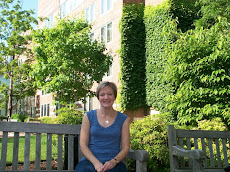I am back in Phoenix and boy is my brain tired! Actually, I think its reshaping. It will take me some time before I am able to adequately describe my sabbatical experience. What I know for sure is that my Fellowship is not over…it has just begun. The traveling I did took me many places to learn, observe, and gather a wealth of ideas and information. The reaping of rewards starts from here.
St. Joseph the Worker could not be better situated to take advantage of new opportunities. In preparation for my leave we created an organizational management plan. Responsibilities were divided and tasks reassigned. While I was out of the office for over 6 weeks, the crew at SJW masterfully ran the show. The team connected to each other in new ways. They increased their communication and confidence. They were empowered and relied upon to manage the organization at a whole new level. My leave created capacity in the organization. I am relieved to say they welcomed me back with open arms but the truth is my being gone was as good for them as it was for me. And SJW is stronger than ever as a result. Watch out world…here we come!
Social Enterprise was one of my main learning objectives for my travels. I observed some pretty ingenious ideas out there. One thing that is clearer to me is that you cannot learn about great social enterprise options just by observing what another agency does. You must consider the options in the context of the entire community. What are the characteristics of that community - its demographics, culture, geographic layout, industry & business leaders, climate (political and weather!), infrastructure, population and government role in issues such as homelessness, for starters? Where are there gaps in community services? How can we provide a product or service our community needs, while providing an experience that is desirable, dignified, and useful for the individuals doing the work?
Please, contact me if you are interested in exploring social enterprise. I know there are many of you out there doing it and we look forward to learning from your insights. This is a conversation we’ll be having for a while; please join in!
In the meantime, thank you for reading my blog and caring about these issues. I am so grateful to St. Joseph the Worker, the Virginia G. Piper Charitable Trust and the multitudes of people living and working in the zone…wherever you are…for upholding human dignity and spreading the love. I thank God for the abundance of blessings He has showered me with. I will keep working to make the most of them!
Yours truly,
Amy
acaffarello@sjwjobs.org
602-417-9849
Wednesday, June 30, 2010
Bigger World View, Smaller World
In early June my sabbatical travels took me to Harvard Business School for a four-day workshop on Performance Measures for Non-Profit Organizations. Before my arrival at Harvard, I tried to imagine what it might be like. I envisioned a grand institution full of exceptionally educated, well-established, likely privileged, individuals. How would I fare? I was somewhat intimated by the prospect of what and whom I might encounter on campus and in class. Turns out…there are regular people there, too. And they indeed made Harvard the grand place I imagined. These regular people are completely in their zone….so dedicated to improving the services they deliver that they traveled from around the world to learn how to do it better.
The class had 80 non-profit leaders; 35% of whom were from other countries. We discussed a dozen case studies of challenges and opportunities faced by nonprofit organizations. The variety of ideas and perspectives that came about were astonishing. I realized how valuable it is to step back and look at evaluation from a different point of view and from a place of different interest; to slow down and remove yourself from the typical seat you sit in and ask questions on behalf of others – better yet, ask more questions of others and stop trying to figure out a solution within your circle of familiarity. Ask someone very different from you what matters most to them or what they would consider “effective results” for your organization. The best gift you could receive is an answer you never saw coming. Getting just a glimpse of issues people across the globe are facing (some surprisingly familiar) made my world seem a little smaller, and a little less obscure.
I am happy to report that I learned the official scientific method of proving program effectiveness doesn’t exist. Its not scientific, it’s simple (not easy, simple). It’s visible. Which of the results you are tracking translate into knowing what actions to take? Put the charts down and ask a few of the simplest questions you can think of (better yet again, find out what someone else’s questions are). Does your data answer them? Is it actually informing your organization and influencing your strategy? Can someone who does not have your insight, footnotes, history, etc. read your data and interpret the story it’s telling? If not, your data might not be revealing the real story – or at least not the one that matters most to people other than you.
Anybody out there want to swap stories? I am back in the zone and would love to hear from you.
Many Blessings,
Amy
The class had 80 non-profit leaders; 35% of whom were from other countries. We discussed a dozen case studies of challenges and opportunities faced by nonprofit organizations. The variety of ideas and perspectives that came about were astonishing. I realized how valuable it is to step back and look at evaluation from a different point of view and from a place of different interest; to slow down and remove yourself from the typical seat you sit in and ask questions on behalf of others – better yet, ask more questions of others and stop trying to figure out a solution within your circle of familiarity. Ask someone very different from you what matters most to them or what they would consider “effective results” for your organization. The best gift you could receive is an answer you never saw coming. Getting just a glimpse of issues people across the globe are facing (some surprisingly familiar) made my world seem a little smaller, and a little less obscure.
I am happy to report that I learned the official scientific method of proving program effectiveness doesn’t exist. Its not scientific, it’s simple (not easy, simple). It’s visible. Which of the results you are tracking translate into knowing what actions to take? Put the charts down and ask a few of the simplest questions you can think of (better yet again, find out what someone else’s questions are). Does your data answer them? Is it actually informing your organization and influencing your strategy? Can someone who does not have your insight, footnotes, history, etc. read your data and interpret the story it’s telling? If not, your data might not be revealing the real story – or at least not the one that matters most to people other than you.
Anybody out there want to swap stories? I am back in the zone and would love to hear from you.
Many Blessings,
Amy
Subscribe to:
Posts (Atom)







